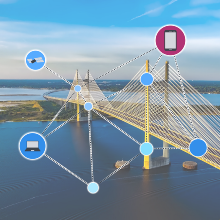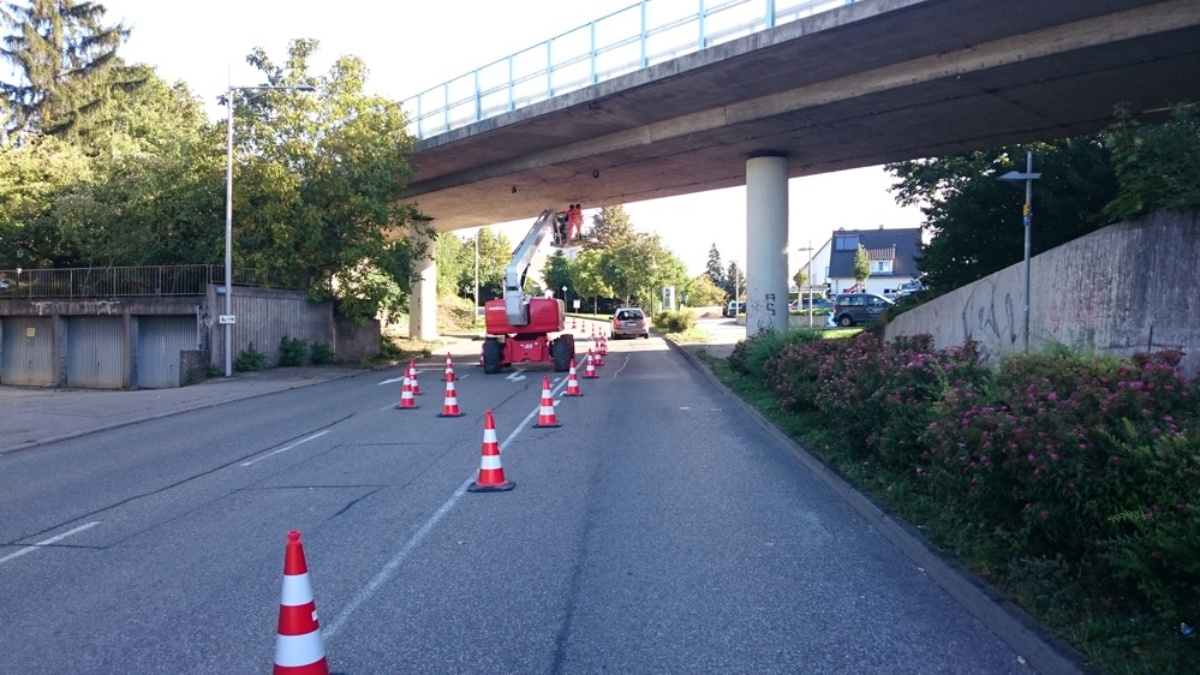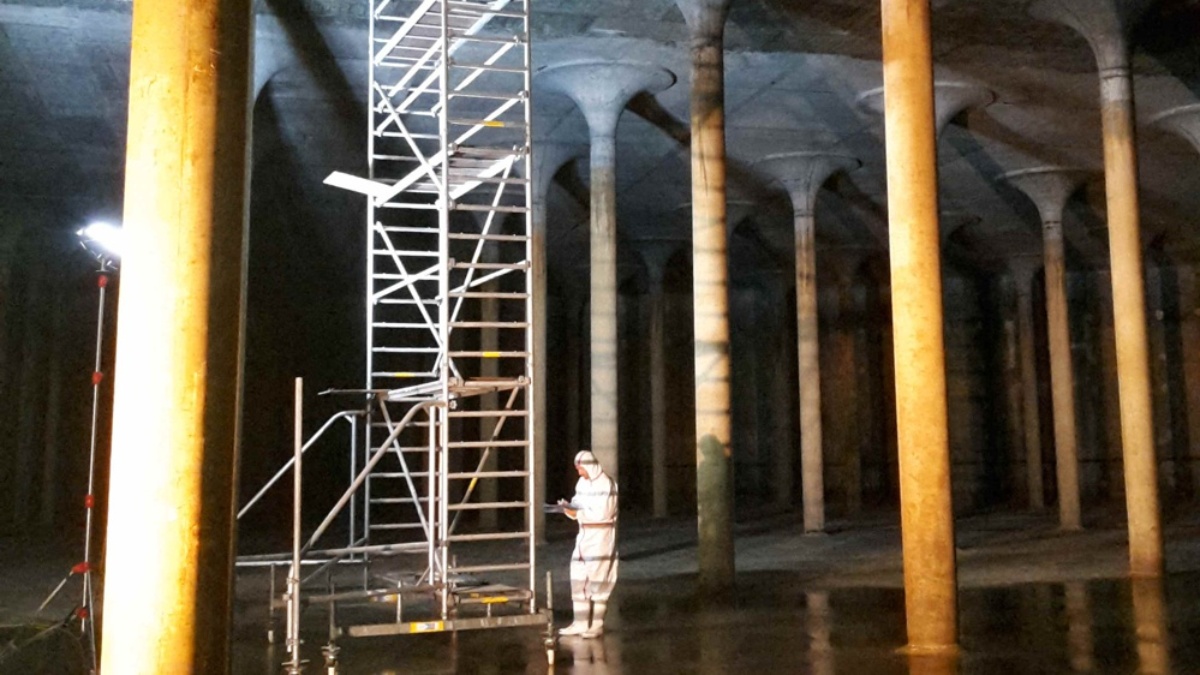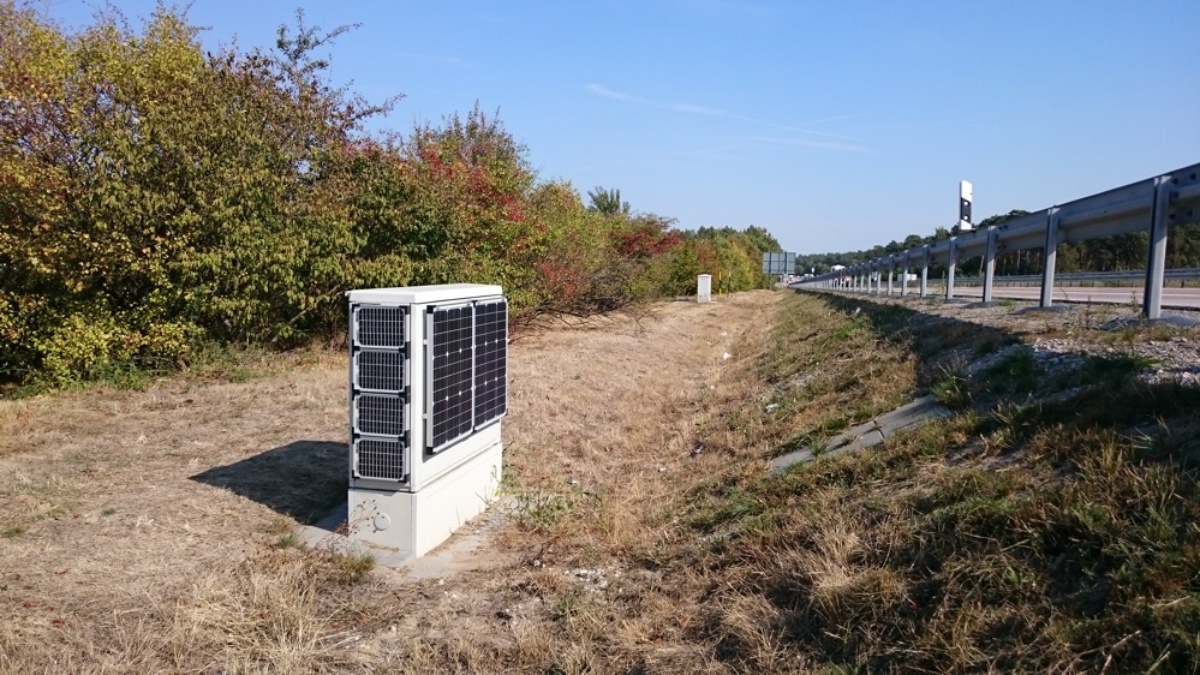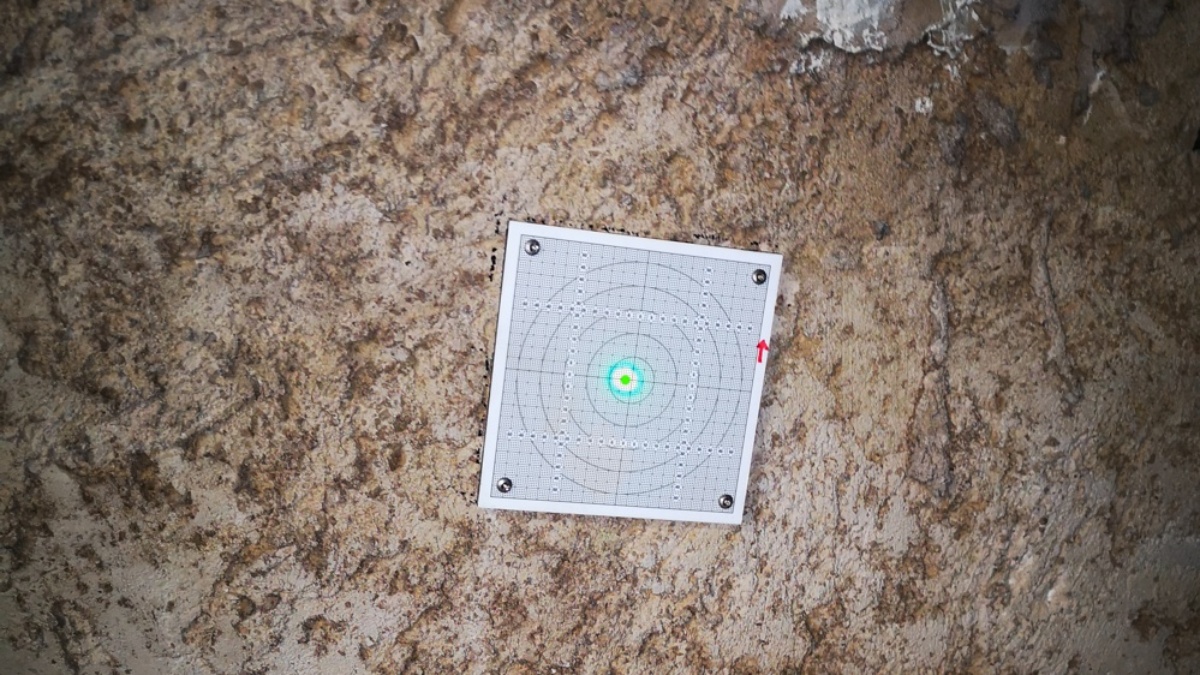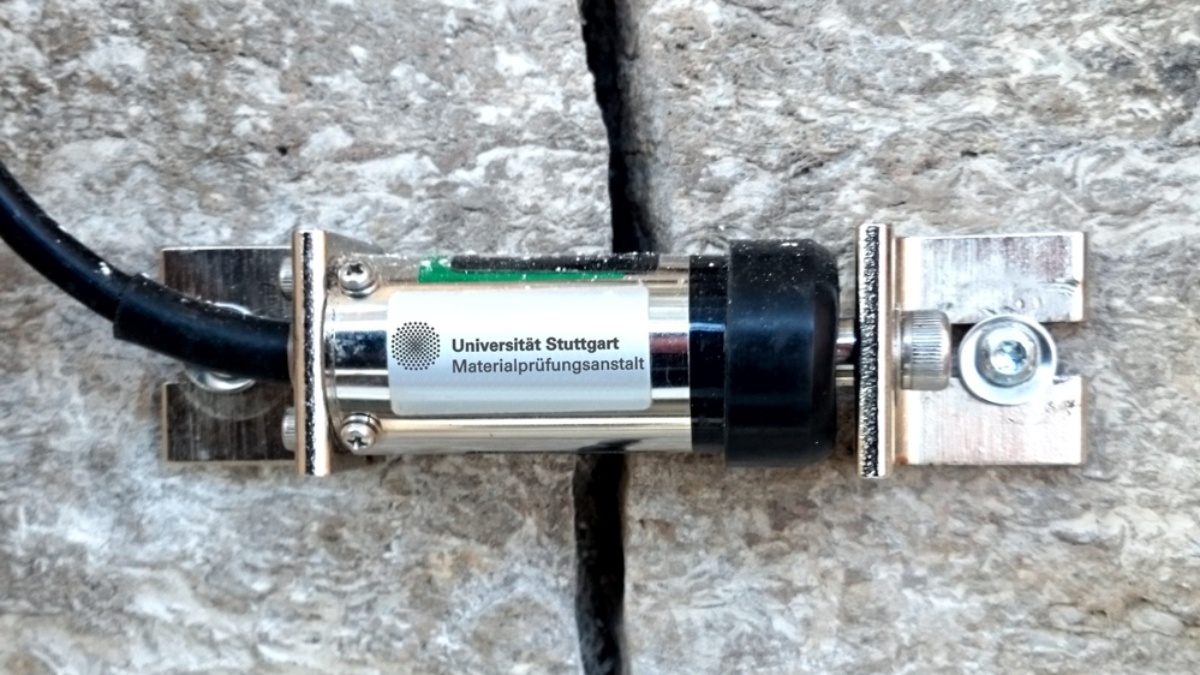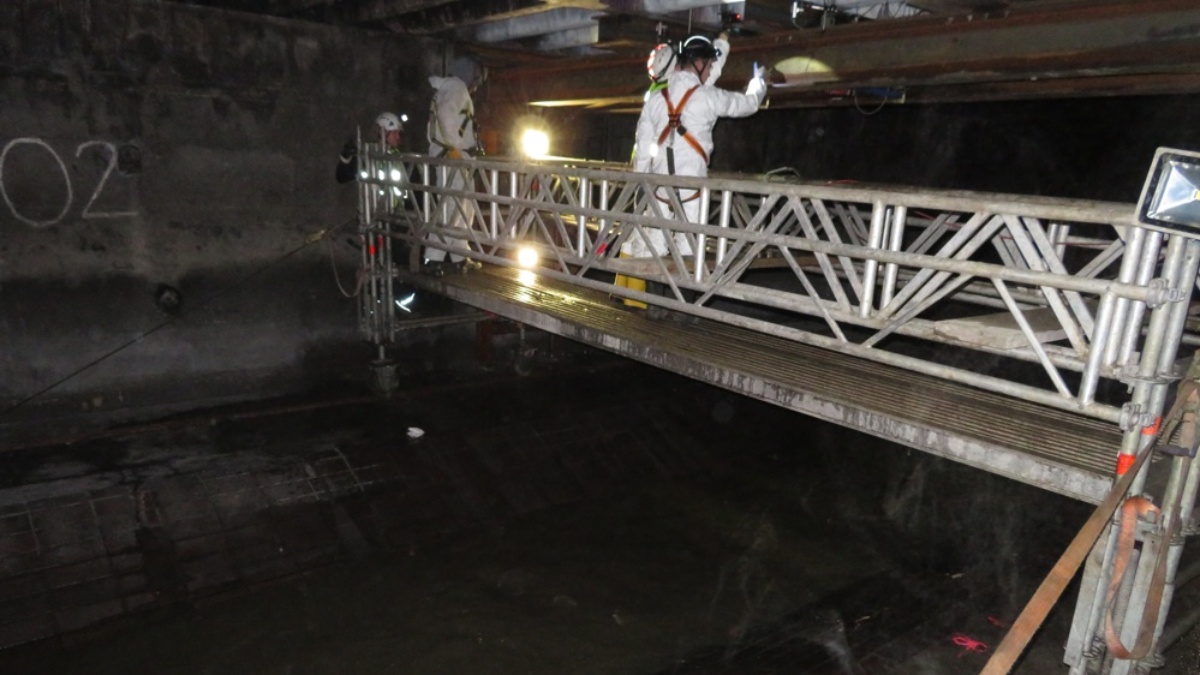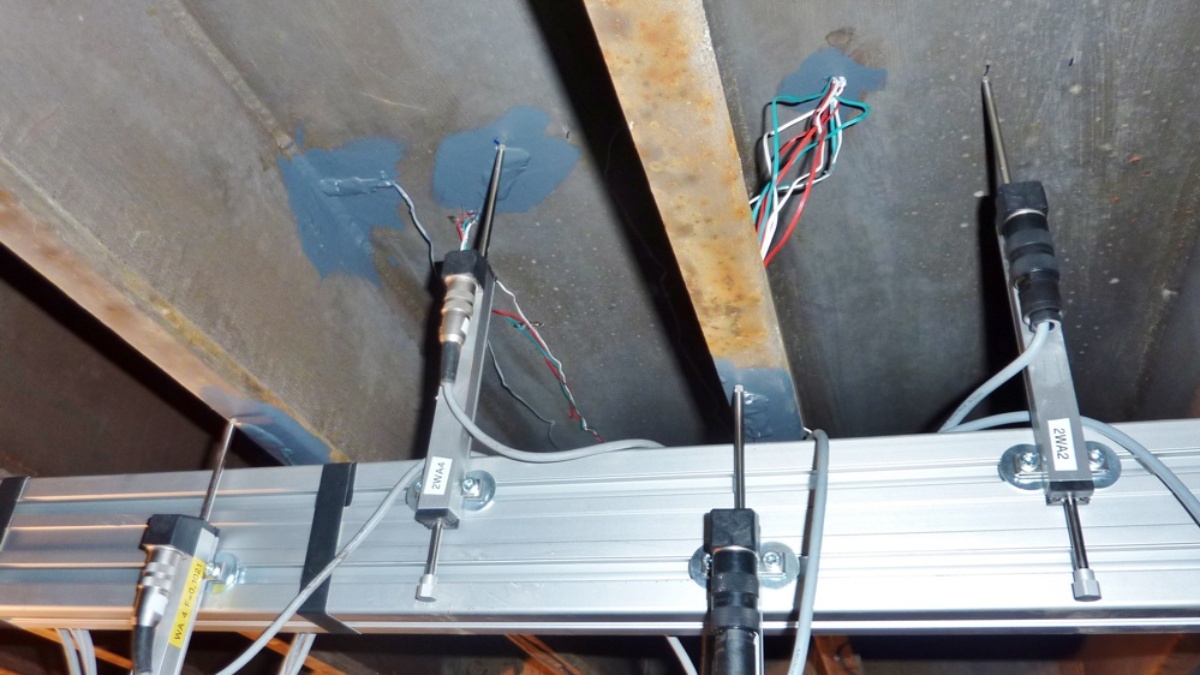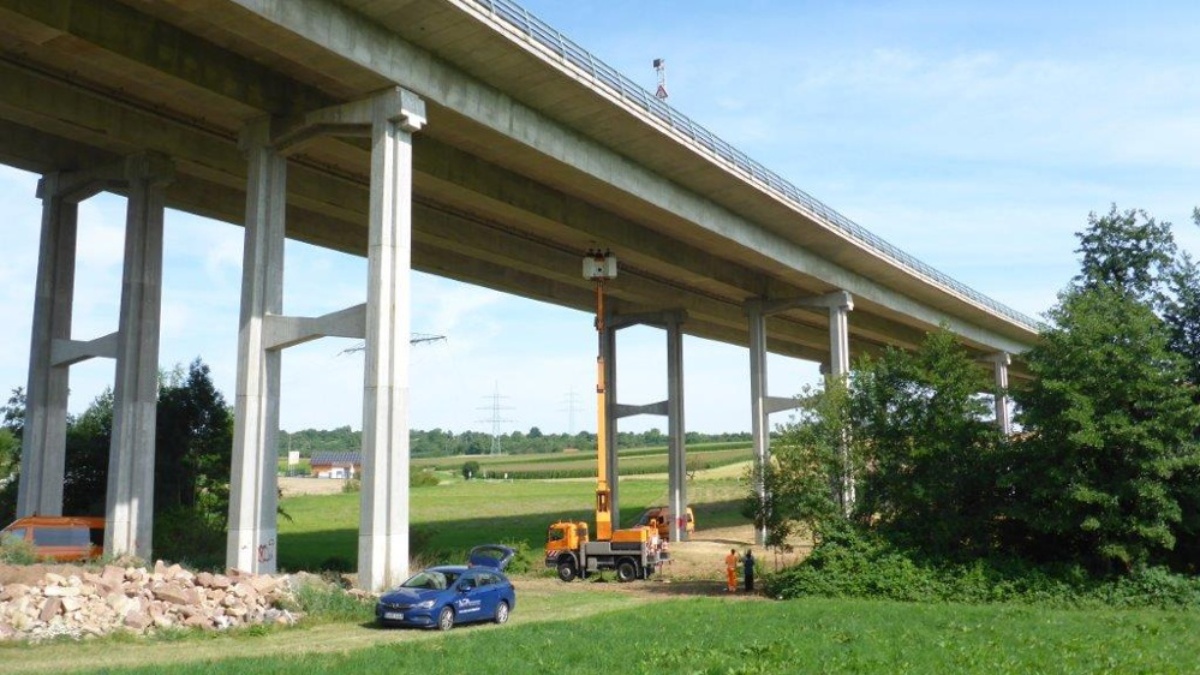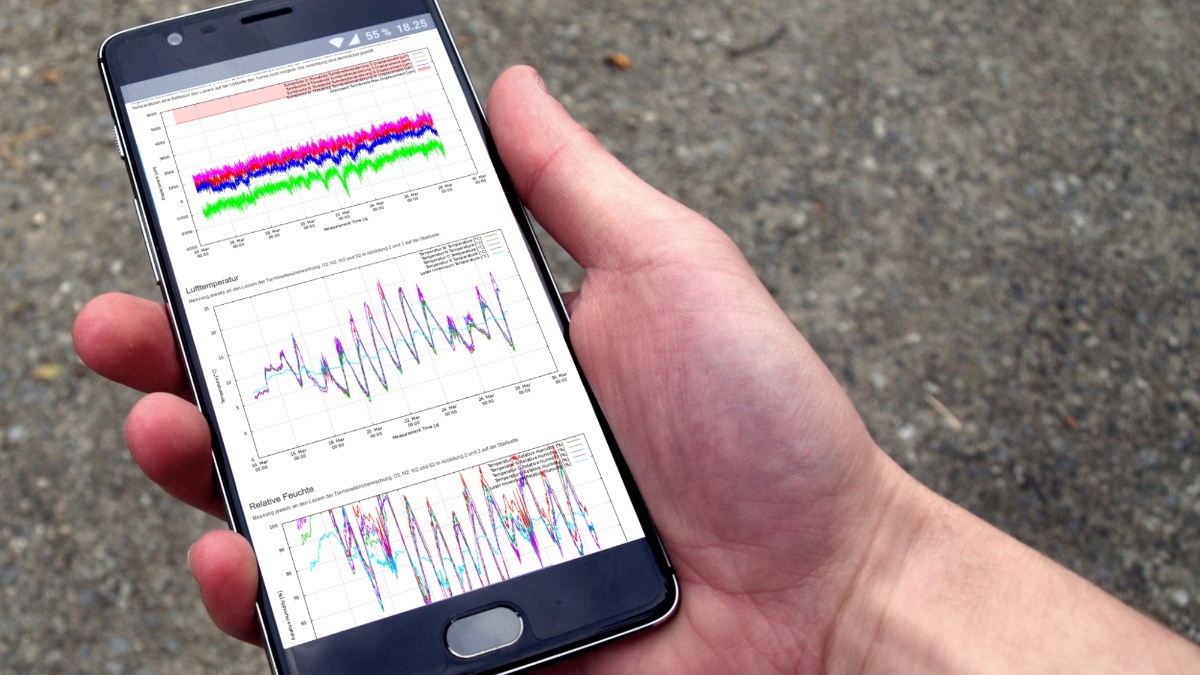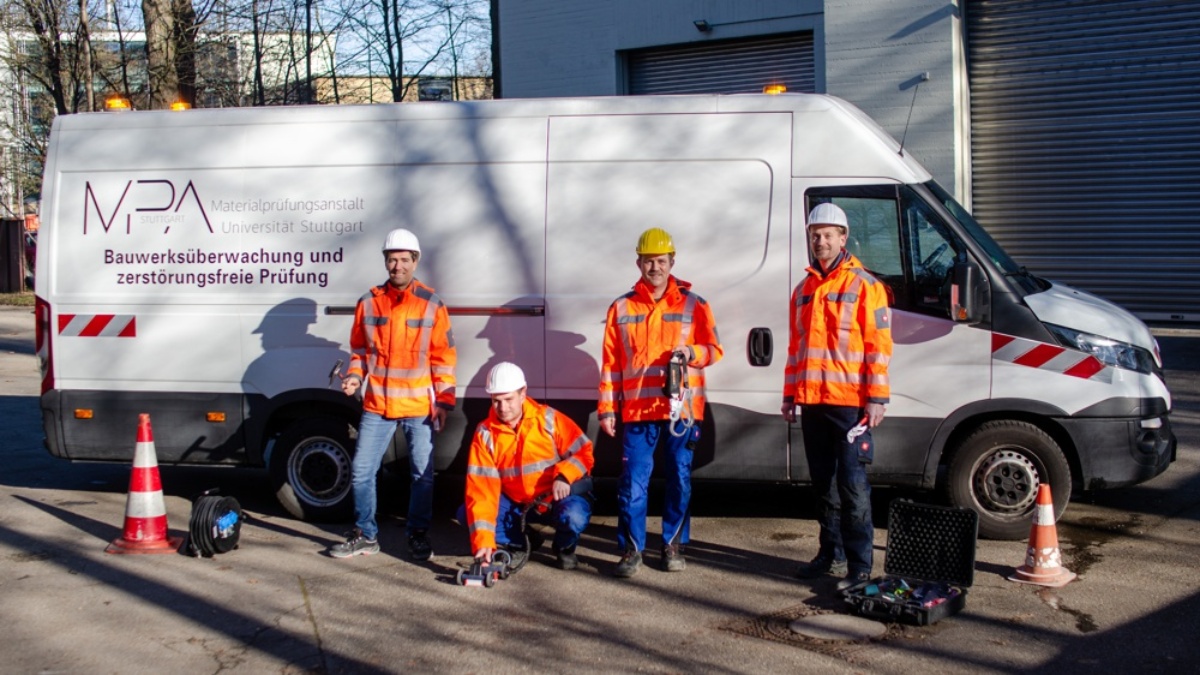Precise knowledge of the condition of your structures at any point in time is a precondition for optimized structure management and for planning targeted preservation measures. We offer to monitor your historic and contemporary structures. Our services cover the entire cycle from planning and conception over instrumentation and operation up to the evaluation of the monitoring data according to your needs.
Our monitoring services at a glance
The aim of structural monitoring is to have available at any given moment a condition assessment of the materials, of components or of a structure, to be able to determine long-term changes in a construction or to be able to record isolated events at the structure. The monitoring of structural characteristics is carried out taking into account static and dynamic stresses as well as climatic influences.
We advise you whether the permanent technical measurement instrumentation of your construction is useful for your specific task. We will provide you with information on which parameters you should record for the purpose, which measurement technology is most suitable, which results you can expect and which prerequisites must be met for successful monitoring.
As a central institution of the University of Stuttgart, we can provide independent and non-partisan consulting.
In close cooperation with you, we develop a monitoring concept tailored to your specific needs. You benefit from our many years of experience in instrumentation and operation of a wide range of different monitoring systems. Depending on the requirements profile, we will design the optimal monitoring solution for you, from simple data loggers to complex, networked systems. We have access to a large number of different measuring system manufacturers or, if desired, we can also develop in-house solutions.
Due to our leading position in the current DGZfP Guideline B09 on Structural Monitoring, we are excellently networked with monitoring experts from industry and research in Germany and beyond and can develop an optimal concept for you on this basis.
Building on many years of experience, we use state-of-the-art measurement technology and proven methods to offer monitoring tailored to your needs. We use classical electrical measurement systems (wired and wireless), laser distance measurement and the latest fiber optic sensor technology (FBG) to instrument your structures, customized for your specific tasks.
Our range of expert services includes the monitoring of modern and historic buildings, each with its own special requirements and challenges. The installation can usually be realized in existing buildings with only minor interventions in the substance. We are experienced in dealing with historically protected buildings. We will be happy to provide you with references and consult on your particular matter.
We manage your monitoring during the entire service life. This enables you to perform targeted construction management with maximum resource efficiency.
Your monitoring data is stored securely on a server at the MPA University of Stuttgart and is available for you to access live at any time via a password-protected online portal.
When specified limit values are exceeded or certain parameter combinations occur, an automatic alarm can be set up. This will always keep you on the safe side and allow you to implement resource-efficient monitoring of your structures in no time at all.
We monitor for you
Particularly in the case of known damage, the monitoring of the further development is a decisive factor in the assessment of the interventions. Geometric changes are of great importance in this context. As a general rule, these are strongly dependent on the influences, such as the traffic loads and the temperature.
We monitor the mentioned geometric parameters and provide you with the recorded data in the most suitable form for further analyses. We support you in the interpretation, allowing you to obtain essential information from the monitoring in a consolidated form and not just raw data.
A special case is the opening of coupling joints in prestressed concrete members. We can equip these with measurement technology, monitor them permanently and analyze them within the framework of static and dynamic load tests and evaluate their response in a structure-specific manner.
A major factor in the assessment of prestressed and reinforced concrete structures is the development of new cracks. It is generally not known where these will develop, which can make measurement a challenge.
We offer detection and localization of new cracks in concrete surfaces using long-range fiber optic sensors based on Fiber Bragg Grates (FBG). This technique also allows us to monitor the evolution of known cracks with a resolution in the range of µm and to detect exceptional concrete strains before cracking starts.
With our patented algorithm, we can reliably separate external influences from damage formation, enabling reliable automated alarms.
For the assessment of existing cracks in prestressed concrete members with suspected hydrogen-induced or chloride-induced stress corrosion cracking, we offer the non-destructive determination of the actual condition with magnetic flux leakage inspection.
Meaningful interpretation of monitoring data always requires knowledge of the relevant external influences. Often, global and local temperature changes are decisive for the most pronounced structural reactions. It is important to distinguish between structural damage and seasonal and daily variations in temperature, traffic and wind loads, and other influences.
We acquire the loads on the structure, the immediate environmental conditions on the sunny and shady sides, the component temperatures and much more with sensors that are optimally adapted to your particular challenge. These include, among others, solar radiation, wind conditions, CO2 levels, precipitation, air pressure and chemical/biological deposits.
Vibrations and shocks can cause severe damage to structures. However, they can also be used purposefully to characterize the natural vibration behavior and to draw conclusions about structural changes.
We instrument your structure for vibration and shock monitoring according to DIN 4150 or ETSI EN 300 019 and record the amplitudes and frequency ranges of the events. The individual measurements are recorded and stored for further use when specified, frequency-dependent limit values are exceeded.
The determination of material moisture in civil engineering is currently still a topic that has not been conclusively clarified by research. Closely related to this are the monitoring of salt loads, salt movements and crystallization states in building materials. Our employees are specially qualified for the instrumented monitoring of material moisture and salts. At present, a DGZfP guideline on moisture measurement is being finalized in cooperation with us.
We offer you to carry out monitoring of material moisture and salts on the basis of the current scientific knowledge and technical possibilities. We advise you in detail which conclusions can be reasonably expected and where the current application limits lie.
Monitoring in practice
DGZfP Merkblatt B 09. Dauerüberwachung von Ingenieurbauwerken. Deutsche Gesellschaft für Zerstörungsfreie Prüfung (DGZfP), Unteraussschuss Dauerüberwachung von Bauwerken, Berlin, 2022. Bezugsquelle
DBV Merkblatt Brückenmonitoring. Planung, Ausschreibung und Umsetzung. Deutscher Beton- und Bautechnik-Verein e.V. (DBV), Berlin, 2018. Bezugsquelle
Structural Health Monitoring Technologies for Concrete Structures – Report. ACI PRC-444.2-21. American Concrete Institute (ACI), Farmington Hills, MI, 2021. ISBN 978-1-64195-144-9. Bezugsquelle
Monitoring von Brücken und anderen Ingenieurbauwerken. Merkblatt RVS 13.03.01. Österreichische Forschungsgesellschaft Straße – Schiene – Verkehr, Wien, 2022. Bezugsquelle
Structural Monitoring. Transport Research Circular E-C246. Transport Research Board (TRB), Washington, D.C., 2019. Link zum Volltext (pdf, 0,9 MB)
DGZfP Merkblatt B9 (zurückgezogen). Merkblatt über die automatisierte Dauerüberwachung im Ingenieurbau. Deutsche Gesellschaft für Zerstörungsfreie Prüfung (DGZfP), Unteraussschuss Dynamische Untersuchungen, Berlin, 2000.
DIN 1076:1999-11. Ingenieurbauwerke im Zuge von Straßen und Wegen - Überwachung und Prüfung. Beuth Verlag, Berlin, November 1999. Bezugsquelle
Bauwerksprüfung nach DIN 1076. Bedeutung, Organisation, Kosten. Dokumentation 2013. Bundesministerium für Verkehr, Bau und Stadtentwicklung (BMVBS), Berlin, 2013. Link zum Volltext (pdf, 3 MB)
Richtlinien für die Erhaltung von Ingenieurbauten (RI-ERH-ING). Richtlinien zur einheitlichen Erfassung, Bewertung, Aufeichnung und Auswertung von Ergebnissen der Bauwerksprüfung nach DIN 1076 (RI-EBW-PRÜF). Bundesministerium für Verkehr und digitale Infrastruktur (BMVI), Berlin, 2017. Link zum Volltext (pdf, 3 MB)
Richtlinien für die Erhaltung von Ingenieurbauten (RI-ERH-ING). Leitfaden Objektbezogene Schadensanalyse (OSA). Bundesministerium für Verkehr, Bau und Stadtentwicklung (BMVBS), Berlin, 2007. Link zum Volltext (pdf, 0,6 MB)
Handlungsanweisung zur Überprüfung und Beurteilung von älteren Brückenbauwerken, die mit vergütetem, spannungsrisskorrosionsgefährdetem Spannstahl erstellt wurden (Handlungsanweisung Spannungsrisskorrosion). Bundesministerium für Verkehr, Bau und Stadtentwicklung (BMVBS), Berlin, 2011. Link zum Volltext (pdf, 1 MB)
Richtlinie zur Nachrechnung von Straßenbrücken im Bestand (Nachrechnungsrichtlinie). Bundesministerium für Verkehr, Bau und Stadtentwicklung (BMVBS), Berlin, 2011. Link zum Volltext (pdf, 2,3 MB)
Richtlinie zur Nachrechnung von Straßenbrücken im Bestand (Nachrechnungsrichtlinie). 1. Ergänzung. Bundesministerium für Verkehr, Bau und Stadtentwicklung (BMVBS), Berlin, 2015. Link zum Volltext (pdf, 1,4 MB)
Hinweise für die Überprüfung der Standsicherheit von baulichen Anlagen durch den Eigentümer/ Verfügungsberechtigten. Konferenz der für Städtebau, Bau- und Wohnungswesen zuständigen Minister und Senatoren der Länder (Argebau), Bauministerkonferenz, 2006. Link zum Volltext (pdf, 0,1 MB)
VDI 6200:2010-02. Standsicherheit von Bauwerken. Regelmäßige Überprüfung. Verein Deutscher Ingenieure (VDI), Düsseldorf, 2010/2015. Bezugsquelle
Richtlinie für die Überwachung der Verkehrssicherheit von baulichen Anlagen des Bundes (RÜV). Bundesministerium für Verkehr, Bau und Stadtentwicklung (BMVBS), Berlin, 2008. Link zum Volltext (pdf, 0,8 MB)
Richtlinie 804.8001. Inspektion von Ingenieurbauwerken; Allgemeine Grundsätze. DB Netz AG, Frankfurt am Main, 2020. Bezugsquelle
Richtlinie 804.8002. Inspektion von Ingenieurbauwerken; Eisenbahnüberführungen. DB Netz AG, Frankfurt am Main, 2020. Bezugsquelle
Richtlinie 804.8003. Inspektion von Ingenieurbauwerken; Überbauungen von Betriebsanlagen und sonstige Überbauungen. DB Netz AG, Frankfurt am Main, 2020. Bezugsquelle
Richtlinie 804.8004. Inspektion von Ingenieurbauwerken; Sonstige Ingenieurbauwerke. DB Netz AG, Frankfurt am Main, 2020. Bezugsquelle
Richtlinie 805.0104. Tragsicherheit Eisenbahnbrücken; Grundlagen für die Nachrechnung; Messtechnische Bauwerksuntersuchungen. DB Netz AG, Berlin, 2021. Bezugsquelle
Richtlinie 805.0202A01. Tragsicherheit Eisenbahnbrücken; Tragsicherheit bestehender Eisenbahnbrücken mit spannungsrisskorrosionsgefährdeten Spannstählen. DB Netz AG, München, 2021. Bezugsquelle
Arbeitshilfe zu Richtlinie 805.0202A01. Nachrechnungskonzept für Bauwerke mit spannungsrisskorrosionsgefährdeten Spannstählen. DB Netz AG, München, 2020. Bezugsquelle
Richtlinie 883.8000. Geo-Monitoring; Grundsätze. DB Netz AG, Frankfurt am Main, 2020. Bezugsquelle
DGZfP Merkblatt B 13. Feuchtemessung im Bauwesen. Deutsche Gesellschaft für Zerstörungsfreie Prüfung (DGZfP), Unteraussschuss Feuchte, Berlin. In Vorbereitung
Hinweise für Eigentümer und Mieter von Wohngebäuden, Wohnungen und Nebengebäuden mit Spannbetondecken mit dem Bindemittel Tonerdeschmelzzement, hergestellt in den Jahren 1952 bis 1963. Bayrisches Staastministerium des Inneren, Oberste Baubehörde, München, 1993. Link zum Volltext (pdf, 4 MB)
Sakiyama, F.I.H.: Real-size structural health monitoring of a pre-stressed concrete bridge based on long-gauge fiber Bragg grating sensors. Dissertation, Universität Stuttgart, Materialprüfungsanstalt, 2021. Link zum Volltext (pdf, 2,5 MB)
Lehmann, F.: Non-destructive testing and monitoring as elements of building inspection. MPA Universität Stuttgart, Otto-Graf Journal, 19, S. 119-130, 2020. Link zum Volltext (pdf, 0,1 MB)
Sakiyama, F.I.H., Lehmann, F., Garrecht, H.:Structural health monitoring of concrete structures using fibre-optic-based sensors: a review. Magazine of Concrete Research, 73 (4), 2021. Bezugsquelle
Lehmann, F., Grüner, F., Schreiner, S., Hof, J.: Bauwerksüberwachung am Blauen Turm. Konzeptionierung, Instrumentierung und Betrieb eines Monitoringsystems zur Überwachung der strukturellen Integrität des Blauen Turms in Bad Wimpfen. In: Grüner, F., Frick, J. (Hrsg.): Die Instandsetzung des Blauen Turms in Bad Wimpfen. Tagungsband zum Kolloquium am 17.04.2019 in Bad Wimpfen. Materialprüfungsanstalt Universität Stuttgart, Fraunhofer IRB Verlag, Stuttgart, S. 65-73, 2019. ISBN 978‐3‐7388‐0301‐3. Link zum Volltext (pdf, 25,3 MB)
Sakiyama, F.I.H., Lehmann, F., Garrecht, H.: A novel runtime algorithm for the real-time analysis and detection of unexpected changes in a real-size SHM network with quasi-distributed FBG sensors. Sensors, 21 (8), 2021. Link zum Volltext (pdf, 5,7 MB)
Sakiyama, F.I.H., Lehmann, F., Veríssimo, G.S., Garrecht, H.: Quantifying the extent of local damage of a 60-year-old prestressed concrete bridge: a hybrid SHM approach. Structural Health Monitoring, 2022. Link zum Volltext (pdf, 4,7 MB)
Lehmann, F., Schreiner, M., Laumann, S.: The new DGZfP guideline monitoring of civil engineering structures. MPA Universität Stuttgart, Otto-Graf Journal, 20, S. 161-166, 2021. Link zum Volltext (pdf, 0,1 MB)
Lehmann, F.: Instrumented monitoring of moisture and salt by electrical impedance measurements. Dissertation, Universität Stuttgart, Materialprüfungsanstalt, 2018. Link zum Volltext (pdf, 12,6 MB)
Wüstholz, T.: Instandsetzung oder Neubau von Massivbrücken? Erfahrungen und davon abgeleitete Ansätze. Bundesanstalt für Wasserbau (BAW), Kolloquium Instandsetzung von Wasserbauwerken, 25. und 26.10.2016. Link zum Volltext (pdf, 1 MB)
Bauwerkprüfung nach DIN 1076. Bundesministerium für Verkehr und digitale Infrastruktur (BMVI), 18.07.2018 - Video in der Langversion (ca. 45 Minuten) und der Kurzversion (ca. 7 Minuten).
Contact

Frank Lehmann
Dr.-Ing.Head of Department / Head of Unit

Michael Schreiner
Dipl.-Ing.Deputy Head of Unit


